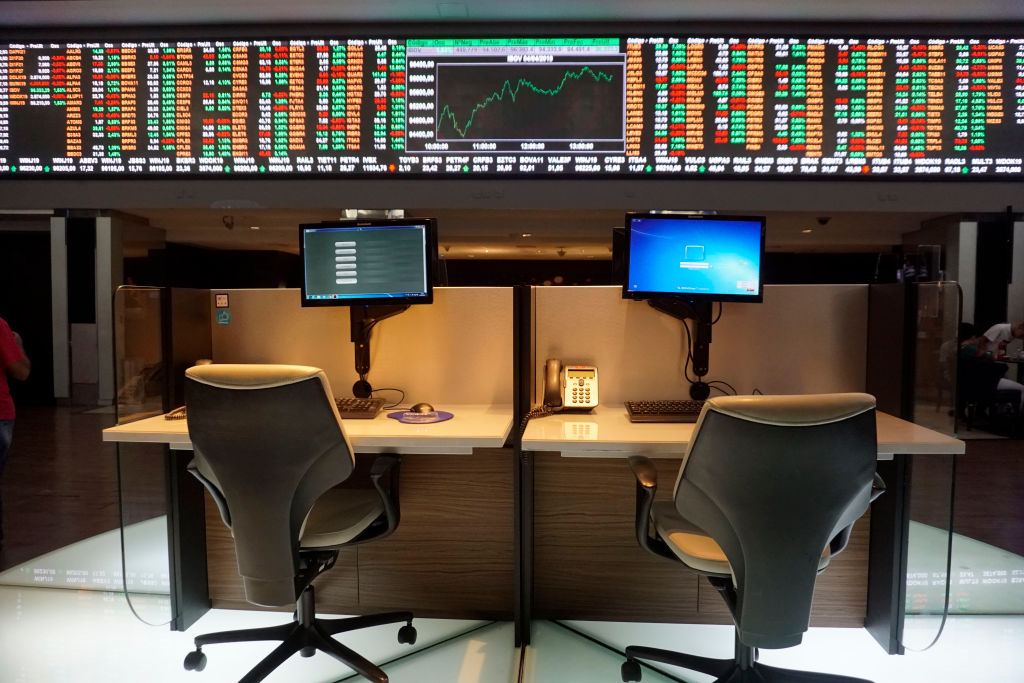It was a busy week for three of the world’s biggest central banks: the Federal Reserve, the Bank of England (BoE), and the Bank of Japan (BoJ). Despite these institutions presiding in three different continents, they showed their love for low interest rates. So, what happened during their September policy meetings?
America, England, and Japan Walk into a Bar
The U.S. central bank completed its two-day Federal Open Market Committee (FOMC) powwow, and the results were not too surprising. Fed Chair Jerome Powell and his merry band of central bankers agreed to keep its benchmark fed funds rate unchanged in the 0% to 0.25% target range.
The Eccles Building revealed that it intends to leave rates where they are until 2023, or until inflation runs higher than the 2% target rate. It also modified its economic projections slightly higher: the Fed expects 4% GDP growth in 2021, 3% in 2022, and 2.5% in 2023. The most significant development from the meeting was its new inflation approach that would see the Fed allow inflation to rise without hiking rates to support the economic recovery.
Soon after Prime Minister Yoshihide Suga was elected by the National Diet to succeed Shinzo Abe, the BoJ convened its meeting. The central bank also left its benchmark rate the same at –0.1%, while maintaining its aggressive bond-buying program. Governor Haruhiko Kuroda and his associates said they would keep its 10-year government bond’s yield at 0%. The BoJ confirmed that it plans to coordinate with Suga on fiscal and monetary policy.
Will the United Kingdom say pip, pip, cheerio to above-zero interest rates? The nine-member Monetary Policy Committee voted to maintain its historically low rate of 0.1%. But the minutes were the real headliner from the meeting as the institution noted that it is looking into “the effectiveness of negative policy rates.” It has long been speculated that the BoE would adopt subzero rates, something that the central bank routinely downplayed. Now it looks like the NIRP is coming. So, Britons, keep a stiff upper lip and all that.
Could the U.S. become the next nation to institute a NIRP? The Fed has said that it does not plan to bring rates below zero, but if it fails to resuscitate the economy and maintain the impressive stock market recovery, it may have no other choice but to fire this unconventional weapon. It is comparable to buying stocks. The central bank has been scooping up corporate bonds, so why would it refrain from acquiring shares in Apple, Walmart, or General Electric, should the equities arena tank?
Is Soybean the Comeback Kid?
What an impressive few years it has been for U.S. soybeans. While prices are still below their record high of $17.43 a bushel from 2012, they have topped $10 for the first time since 2018. The crop had been one of the casualties in President Donald Trump’s trade war with China. Still, it has also been one of the chief beneficiaries of his phase one deal with Beijing as the world’s second-largest economy enhances its purchases of the agricultural commodity. How much longer can this bull run survive? That might depend on Brazil and China. The former has seen its harvest surge to record highs this past summer, and the latter is continuing to boost demand to add to its domestic inventories. Argentina may play a factor, while foreign exchange rates will also linger in the background. Whatever the case, this is good news for American growers since they can take advantage of higher prices, a weaker U.S. dollar, and government subsidies.
IPO Like It’s 1999, Baby!
Do you even IPO, bro? The initial public offering market is booming, despite the U.S. economy in the middle of a pandemic and uncertainty in the broader financial market. Nothing seems to be stopping the IPO industry from partying like it is 1999.
Snowflake, a cloud-based database platform, had a monumental opening, raising close to $4 billion before selling a single stake to Salesforce and Berkshire Hathaway. It was a wild ride. The company initially proposed a price range of $75 to $85 per share, but then raised it to around $100. The shares were finally offered for $120. The stock then opened at more than $200 during the September 16 trading session. Shares slumped nearly 20% since. Still, this was the largest valuation of a firm to double its price in a market debut. When Warren Buffett gets in on the IPO frenzy, you pay attention.
JFrog Ltd., a service that allows businesses to release their software upgrades to all their users and employees quickly, had a similar story. JFrog shares debuted at $77 before falling 10% by the end of the September 17 session.
Indeed, there are many similarities between the IPO mania of the 1990s and today. Simultaneously, there are still plenty of differences to potentially lend credence to the popular Wall Street phrase: “It’s different this time.” The chief fact is that today’s tech firms have a lot more revenues than young internet companies during the dot-com bubble. They might not be profitable, which is prevalent in the IPO market, but they generate revenues.
That said, with cheap money laying around like face masks littering city streets, courtesy of the Fed, it is more than likely that the IPO mania will expand for the remainder of 2020 and into next year. What are you going to do? Buy a low-yielding Treasury? You have no choice if you want to grow your money.
~
Read more from Andrew Moran.




